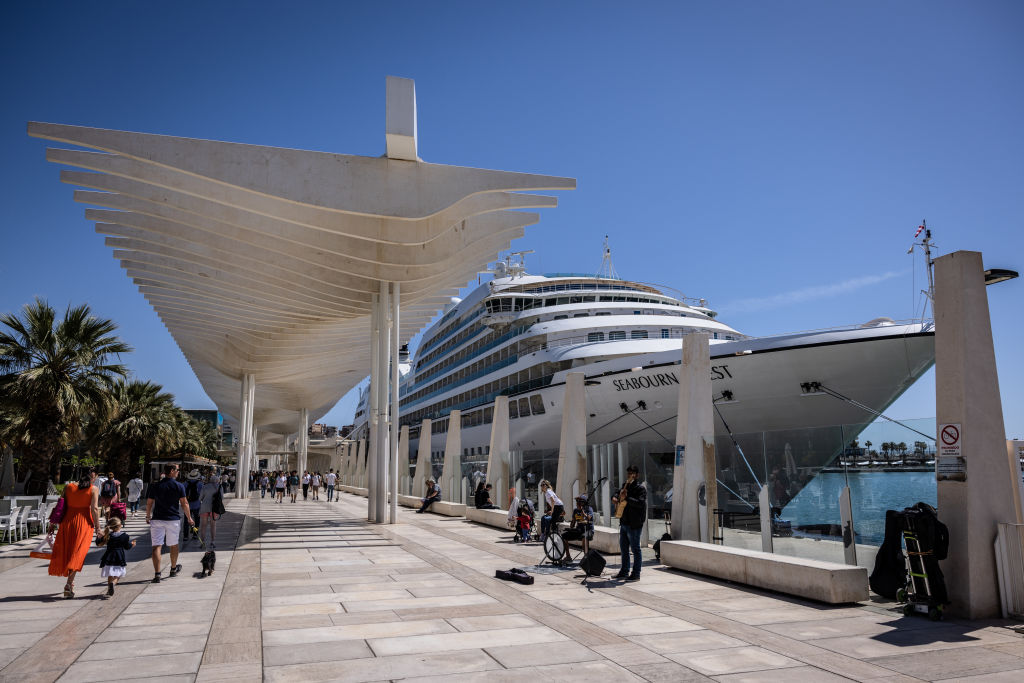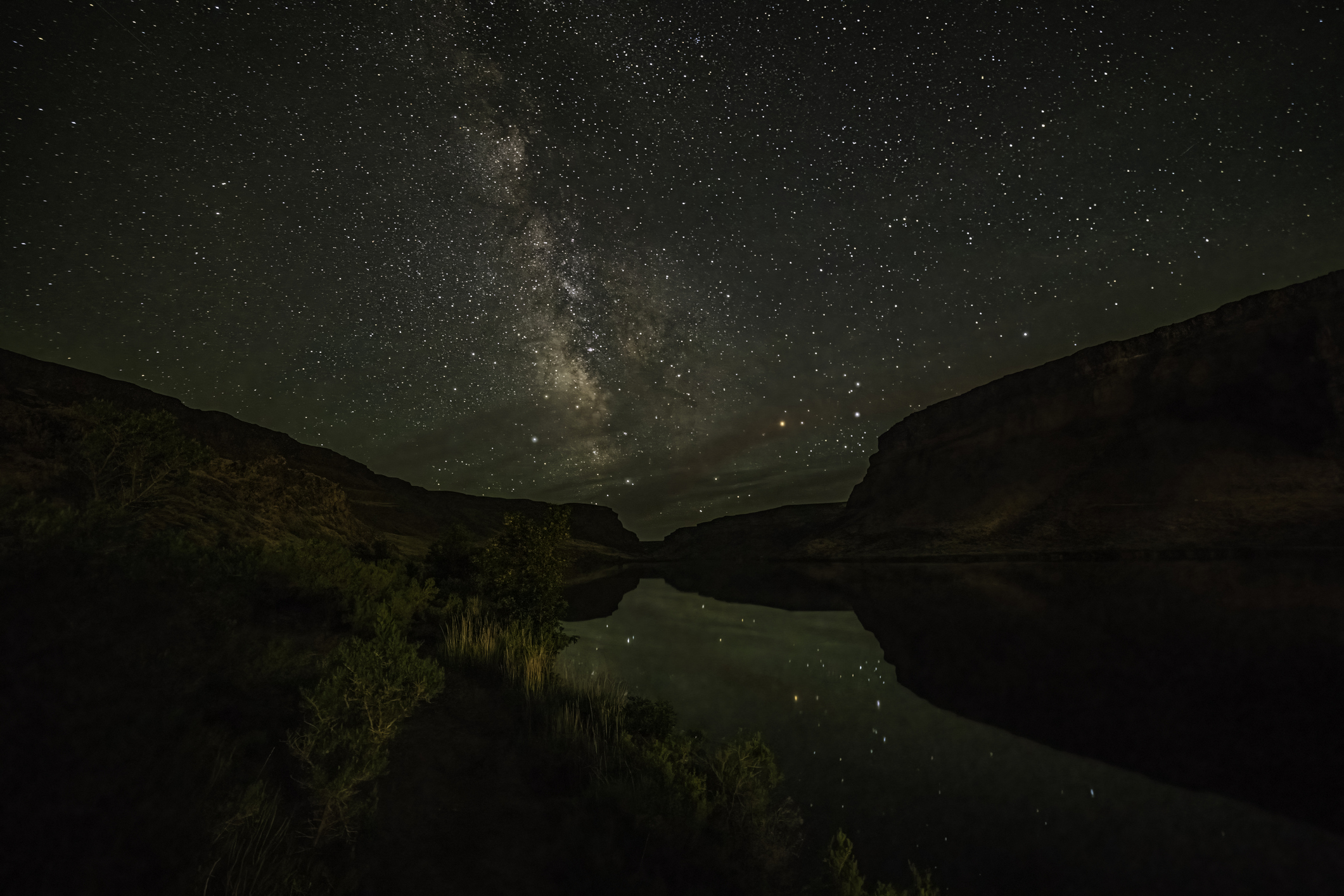Take a Wheelchair to a National Park
The National Park Service offers features and services to make the Grand Canyon and other federal lands accessible to all.
Marian Jacob, who uses a wheelchair because of multiple sclerosis, never thought she would ever experience the beauty of a national park.
But in March, Jacob, 63, and her husband visited the Grand Canyon. They received special permission from the National Park Service to drive their car down a maintenance road and park several miles from the lookout. Then Jacob rode her motorized wheelchair along an asphalt path to the North Rim observation deck. "It was just amazing," says Jacob, who lives in Edgerton, Wis. "We were able to see a number of scenic overlooks of the canyon."
The Grand Canyon visit was the sixth national park she has visited. Her first was in 2008 when she drove her hand-controlled scooter along a hiking path at Yellowstone National Park.
From just $107.88 $24.99 for Kiplinger Personal Finance
Become a smarter, better informed investor. Subscribe from just $107.88 $24.99, plus get up to 4 Special Issues

Sign up for Kiplinger’s Free Newsletters
Profit and prosper with the best of expert advice on investing, taxes, retirement, personal finance and more - straight to your e-mail.
Profit and prosper with the best of expert advice - straight to your e-mail.
Jacob uses the free National Parks and Federal Recreational Lands Access Pass, which is available for people with permanent disabilities. You can use the pass at 407 national park sites and hundreds of federal lands run by the Fish and Wildlife Service, the Bureau of Land Management, the Forest Service and the Bureau of Reclamation. "We want to make sure all segments of society enjoy the national parks, which is why we focus on providing accessible experiences," says Jeremy Buzzell, chief of the National Park Service's accessibility management program.
You can get a pass at the entrance of any national park or federal land. Or you can order a pass by mail for a $10 processing fee. (For more information, go to http://store.usgs.gov/pass/access.html.)
All national parks have features that help the disabled navigate, including accessible bathrooms, parking, and boardwalks or pathways for wheelchairs, scooters and adaptive bicycles that take visitors close to breathtaking vistas. Hotels at the parks have accessible rooms. Many federal lands offer Braille at their museums and display locations, and deaf visitors can ask in advance for a sign-language interpreter.
Some lands provide more services and features than others, so check the Web site of the federal land you hope to visit before you get on the road. Uneven terrain may make it impossible for a person in a wheelchair to see all of a park’s sights. And though many shuttles and trams are wheelchair-accessible, call ahead of your visit to make sure one will be available.
Outfitters Can Help With Arrangements
While individuals can make their own arrangements, a number of tour companies either offer or specialize in accessible outdoor adventures, many on federal lands. The Web sites of many federal lands provide lists of local outfitters, which must receive a permit to operate on federal property, but the government does not endorse private operations.
One group is Wilderness Inquiry, a nonprofit in Minneapolis. A typical trip includes a dozen participants, including three or four with disabilities. The organization provides an individual care attendant and a sign-language interpreter if needed. "We serve people with a wide range of physical, cognitive and emotional disabilities," says Greg Lais, the group's executive director. "We do have a short assessment process to make sure we can meet everyone's needs on a trip." (Find a trip at www.wildernessinquiry.org.)
John Smith, 56, a Minneapolis resident who has cerebral palsy and a spinal cord injury, has been on many Wilderness Inquiry trips. An aide from the group pushes his manual wheelchair. He usually visits federal lands that are no more than a day's car ride away, including Apostle Islands National Lakeshore on Lake Superior in Wisconsin, where he spent five nights camping.
During camping trips, aides place Smith on an inflatable mattress in a tent and handle his personal care, he says. For kayak and canoe trips, aides lift him out of his wheelchair, and place him in the boat. "Here I have a better shot at seeing wildlife, building friendships with new traveling companions and feeling the peace of getting away from it all," Smith says.
Accessible activities vary by site. At Yaquina Head Outstanding Natural Area, in Newport, Ore., Access Pass holders can drive to a cove and watch for whales and bird life. Fishing piers in Yellowstone are accessible by wheelchair. Yosemite National Park provides campsites that are easy to reach by wheelchair. And you can ride a hand-powered bicycle on paved roads along the Colorado Riverway in Moab, Utah, on lands overseen by the Bureau of Land Management.
Pearl Harbor National Park in Honolulu provides an easy path for a wheelchair onto the boat that ferries visitors to the USS Arizona memorial in the middle of the harbor. The documentary at the visitor center is captioned for the hearing impaired.
Special hunts for deer, waterfowl, turkeys and other prey are held periodically at many of the 562 national wildlife refuges for people with disabilities. They include Balcones Canyonlands refuge in Texas, Savannah refuge in South Carolina and White River refuge in Arkansas.
Each hunter is usually allowed to bring one able-bodied assistant or can be partnered with a volunteer. The hunting is typically restricted to a specific area of a refuge where hunting blinds can be reached by car or wheelchair. In some cases, the refuge provides lifts that can raise the wheelchair to a blind. Some sites have modified rules for discharging a firearm from a vehicle, since this may be the only way a hunter with a disability can hunt. Accessible boats may also be available.
Hunters can use guns and bows that have been adapted to accommodate their disabilities. For example, a tripod could secure a rifle or a bow. Disabled hunters will need their own equipment and should get information about dates, accessibility and permits from the wildlife refuge where they intend to hunt.
Before traveling to a federal land or park, be sure it has the kind of accessibility you need. Figure out how physically demanding your visit will be. If you're going into the wilderness with a tour group, ask about the level of service it will provide for your specific needs and the kind of accommodation it provides if you have a medical emergency.
To get an Access Pass, you'll need proof of a permanent disability. That could include a statement by a physician, a document issued by a federal agency such as the Department of Veterans Affairs or the Social Security Administration, or a document issued by a state agency such as a vocational rehabilitation agency.
Profit and prosper with the best of Kiplinger's advice on investing, taxes, retirement, personal finance and much more. Delivered daily. Enter your email in the box and click Sign Me Up.
-
 Plan to Give
Plan to GiveSponsored Charitable giving strategies in the wake of the “One Big Beautiful Bill."
-
 Stocks End Volatile Year on a Down Note: Stock Market Today
Stocks End Volatile Year on a Down Note: Stock Market TodayAfter nearing bear-market territory in the spring, the main market indexes closed out the year with impressive gains.
-
 How We Manage Our Finances Together: 'When You Keep Score, You Can End Up Resentful'
How We Manage Our Finances Together: 'When You Keep Score, You Can End Up Resentful'Douglas Boneparth, a certified financial planner, and his wife, Heather Boneparth, speak with Kiplinger about couples managing finances.
-
 Four Luxury Spa Resorts for Well-Heeled Travelers
Four Luxury Spa Resorts for Well-Heeled TravelersWe hand-picked these U.S. luxury spa resorts for their serenity, amenities and dedication to the comfort of older travelers.
-
 Child-Free Cruises Perfect For Your Retirement Celebration
Child-Free Cruises Perfect For Your Retirement CelebrationHow to find a bespoke ocean or river vacation for adults. Many of these options are smaller, charming river cruises, expeditions, or niche experiences.
-
 Noctourism: The New Travel Trend For Your Next Trip
Noctourism: The New Travel Trend For Your Next Trip"Noctourism" is a new trend of building travel and vacations around events and plans that take place at night. Take a look at some inspiring noctourism ideas.
-
 My Husband and I Retired at 67 With $3.2 Million, But He's Frugal About Travel. How Can I Convince Him to Loosen Up?
My Husband and I Retired at 67 With $3.2 Million, But He's Frugal About Travel. How Can I Convince Him to Loosen Up?We asked financial planning experts for advice.
-
 457 Plan Contribution Limits for 2026
457 Plan Contribution Limits for 2026Retirement plans There are higher 457 plan contribution limits in 2026. That's good news for state and local government employees.
-
 Medicare Basics: 12 Things You Need to Know
Medicare Basics: 12 Things You Need to KnowMedicare There's Medicare Part A, Part B, Part D, Medigap plans, Medicare Advantage plans and so on. We sort out the confusion about signing up for Medicare — and much more.
-
 The Seven Worst Assets to Leave Your Kids or Grandkids
The Seven Worst Assets to Leave Your Kids or Grandkidsinheritance Leaving these assets to your loved ones may be more trouble than it’s worth. Here's how to avoid adding to their grief after you're gone.
-
 SEP IRA Contribution Limits for 2026
SEP IRA Contribution Limits for 2026SEP IRA A good option for small business owners, SEP IRAs allow individual annual contributions of as much as $70,000 in 2025, and up to $72,000 in 2026.